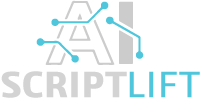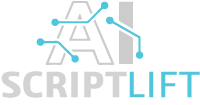
Intent Blog Content
In today’s fast-paced digital landscape, creating high-quality, intent-driven blog content is essential for engaging audiences and improving search engine visibility. Intent blog content focuses on addressing the specific needs, questions, and search intent of users, making it a powerful tool for driving organic traffic and increasing user engagement. At our platform, we leverage advanced artificial intelligence to generate personalized and interactive AI companions that help users craft content tailored to their audience’s intent. Whether you’re aiming to boost SEO performance, enhance content relevance, or improve user experience, our AI-powered solutions are designed to support your content strategy with precision and efficiency. By understanding user behavior and search patterns, intent blog content ensures your message reaches the right audience at the right time, ultimately leading to higher conversion rates and stronger brand authority.
Understanding the Purpose of Intent-Based Content

Intent-based content is a strategic approach to blogging that focuses on aligning your content with the specific needs, motivations, and search behaviors of your target audience. Rather than creating generic posts, intent-based content aims to answer user queries at different stages of the buyer’s journey—awareness, consideration, and decision. This method not only improves user engagement but also enhances SEO performance by targeting high-conversion keywords.
“According to a study by Think with Google, 51% of smartphone users have discovered a new company or product when conducting a search with intent.”
Understanding the purpose of intent-based content is crucial for businesses aiming to drive meaningful traffic and conversions. It ensures that your blog posts are not just informative but also actionable and relevant to what users are actively searching for. For example:
- Informational intent: A user searches “What is AI in content marketing?”
- Navigational intent: A user types “ScriptLift AI blog” to find specific resources.
- Transactional intent: A user looks for “best AI tools for content creation.”
By tailoring content to these intents, businesses can significantly boost their visibility and authority. For more insights on how AI supports this strategy, explore our article on AI in digital content strategy and learn how AI enhances digital marketing.
To stay ahead in the competitive landscape, visit our blogs section for the latest trends and strategies in AI-driven content creation.
For further reading, check out this external resource from HubSpot on understanding search intent.
Types of User Intent and How to Identify Them
Understanding user intent is essential for creating effective intent blog content that resonates with your audience and ranks well in search engines. User intent refers to the reason behind a user’s search query—what they are truly looking to find, learn, or accomplish. There are generally three main types of user intent: informational, navigational, and transactional. Informational intent involves users seeking knowledge or answers, such as “how to optimize blog content.” Navigational intent is when users are looking for a specific website or brand, while transactional intent indicates a readiness to make a purchase or complete an action.
Identifying user intent starts with analyzing keywords and search behavior. For instance, queries starting with “how,” “what,” or “why” often signal informational intent. Tools like Google Search Console and keyword research platforms can help uncover the intent behind search terms. Additionally, reviewing the top-ranking pages for a keyword can provide insight into what users expect to find.
Aligning your content with the correct intent not only improves user experience but also boosts SEO performance. For example, if you’re writing about AI in blogging, understanding whether your audience wants a tutorial or a product recommendation is key. Explore more about how AI is shaping content strategies in our article on AI in digital content strategy, or browse our latest insights on the ScriptLift blog.
Crafting Content That Aligns With Search Intent

Creating blog content that aligns with search intent is essential for driving meaningful traffic and increasing engagement. Search intent refers to the reason behind a user’s query—whether they’re looking to learn something, make a purchase, or find a specific website. To effectively meet this intent, content must be structured to answer the user’s question clearly and comprehensively.
Start by identifying the type of intent—informational, navigational, transactional, or commercial—and tailor your content accordingly. For example, an informational query should be met with detailed, well-researched content that educates the reader. Incorporating relevant keywords naturally and providing value through actionable insights helps improve visibility and user satisfaction.
Using AI tools can significantly enhance your ability to match content with search intent. These tools analyze user behavior and keyword trends to help you create more targeted and effective blog posts. For more insights on how AI is shaping content strategies, explore our article on AI in digital content strategy. Additionally, understanding how AI contributes to SEO can further refine your approach—learn more in our post on AI and the future of SEO.
Ultimately, aligning your blog content with search intent not only boosts your rankings but also builds trust and authority with your audience, making your content more impactful and conversion-friendly.
Tools to Analyze and Optimize for Intent
To create high-performing intent blog content, it’s essential to use the right tools that help identify, analyze, and optimize for user intent. These tools provide valuable insights into what your audience is searching for and how to align your content accordingly. Keyword research platforms like SEMrush and Ahrefs can uncover intent-driven keywords, while tools like Google Search Console help monitor how well your content matches search queries. AI-powered content optimization platforms can further enhance relevance by analyzing semantic patterns and suggesting improvements.
Understanding user behavior through heatmaps and analytics tools also plays a crucial role in refining content strategy. These insights allow marketers to adjust headlines, CTAs, and structure to better meet the needs of readers. Additionally, integrating AI into your workflow can significantly streamline this process. For example, AI tools can automatically assess content readability, keyword density, and engagement metrics to ensure your blog aligns with both user expectations and SEO best practices.
To explore how AI is transforming content strategies, check out our article on the benefits of AI in digital content strategy. You can also read more about how AI is transforming SEO to understand its impact on intent-driven content. By leveraging these tools and insights, businesses can create blog content that not only ranks well but also delivers real value to their target audience.
Common Mistakes in Intent-Driven Content Creation
When creating intent-driven blog content, many marketers fall into common traps that can undermine their efforts. One of the most frequent mistakes is failing to align content with the user’s search intent. Whether the intent is informational, navigational, or transactional, misjudging it can lead to high bounce rates and low engagement. Another common error is keyword stuffing—overloading content with keywords without considering readability or context. This not only disrupts the user experience but can also negatively impact search engine rankings.
Additionally, some content creators overlook the importance of structure and clarity. Without clear headings, subheadings, and logical flow, even the most informative content can become difficult to navigate. Ignoring data-driven insights is another pitfall. Leveraging analytics helps refine content strategies and ensures alignment with audience needs.
A growing number of businesses are turning to AI tools to avoid these mistakes and enhance their content strategies. For example, understanding the benefits of AI in digital content strategy can help tailor content more precisely to user intent. Moreover, exploring the power of AI in digital marketing offers insights into optimizing content performance across platforms.
By recognizing and addressing these common mistakes, content creators can produce more effective, user-focused blog posts that not only meet search intent but also drive meaningful engagement and conversions.
Measuring the Success of Intent-Focused Content
To truly harness the power of intent blog content, it’s essential to measure its success through clear, actionable metrics. Unlike traditional content strategies that focus solely on traffic or keyword rankings, intent-focused content aims to align with the user’s purpose—whether informational, navigational, or transactional. Success, therefore, should be evaluated based on how effectively the content meets these user intents.
Key performance indicators (KPIs) such as engagement rate, time on page, bounce rate, and conversion rate offer valuable insights. For instance, a high engagement rate and longer time on page suggest that the content resonates with the reader’s intent. Additionally, tracking click-through rates (CTR) and goal completions can help determine whether the content is driving users toward desired actions, such as signing up for a newsletter or making a purchase.
Leveraging AI tools can further enhance your ability to analyze and optimize intent-driven content. These tools can identify patterns in user behavior and suggest improvements for better alignment with search intent. For more insights on how AI is transforming content strategies, explore our article on AI in digital content strategy. You can also stay updated with the latest trends and tips by visiting our blogs section.
By continuously monitoring and refining your content based on intent-specific metrics, you can ensure long-term success and improved user satisfaction.
Future Trends in Intent-Based Content Marketing
As digital landscapes evolve, intent-based content marketing is rapidly becoming a cornerstone of successful online strategies. Looking ahead, the future of this approach lies in the seamless integration of artificial intelligence (AI), predictive analytics, and real-time user behavior tracking. These technologies will enable marketers to craft hyper-personalized content that aligns precisely with user intent at every stage of the buyer’s journey.
AI-driven tools are already transforming how businesses understand and respond to search intent. In the coming years, we can expect even more advanced algorithms that anticipate user needs before they’re explicitly expressed. This will empower brands to deliver content that not only answers queries but also guides users toward conversion with minimal friction. For example, AI can analyze behavioral patterns to suggest the most effective content formats—be it blog posts, videos, or infographics—based on individual preferences.
Moreover, the synergy between AI and SEO will continue to strengthen. Businesses that adopt AI-powered solutions will gain a competitive edge by optimizing content in real time, ensuring it remains relevant and discoverable. To explore how AI is shaping this evolution, check out our insights on AI and the future of SEO and the benefits of AI in digital content strategy.
As intent-based marketing grows more sophisticated, staying ahead of these trends will be essential for businesses aiming to build meaningful, lasting connections with their audiences.
In conclusion, crafting intentional blog content is essential for building a meaningful connection with your audience and achieving your blogging goals. By focusing on purpose-driven writing, understanding your readers’ needs, and delivering valuable, relevant information, you can create content that not only engages but also inspires action. Remember, every post should serve a clear purpose—whether it’s to inform, entertain, or persuade. With a thoughtful approach and consistent effort, your blog can become a trusted resource that resonates with readers and stands out in the crowded digital landscape.

